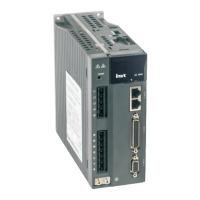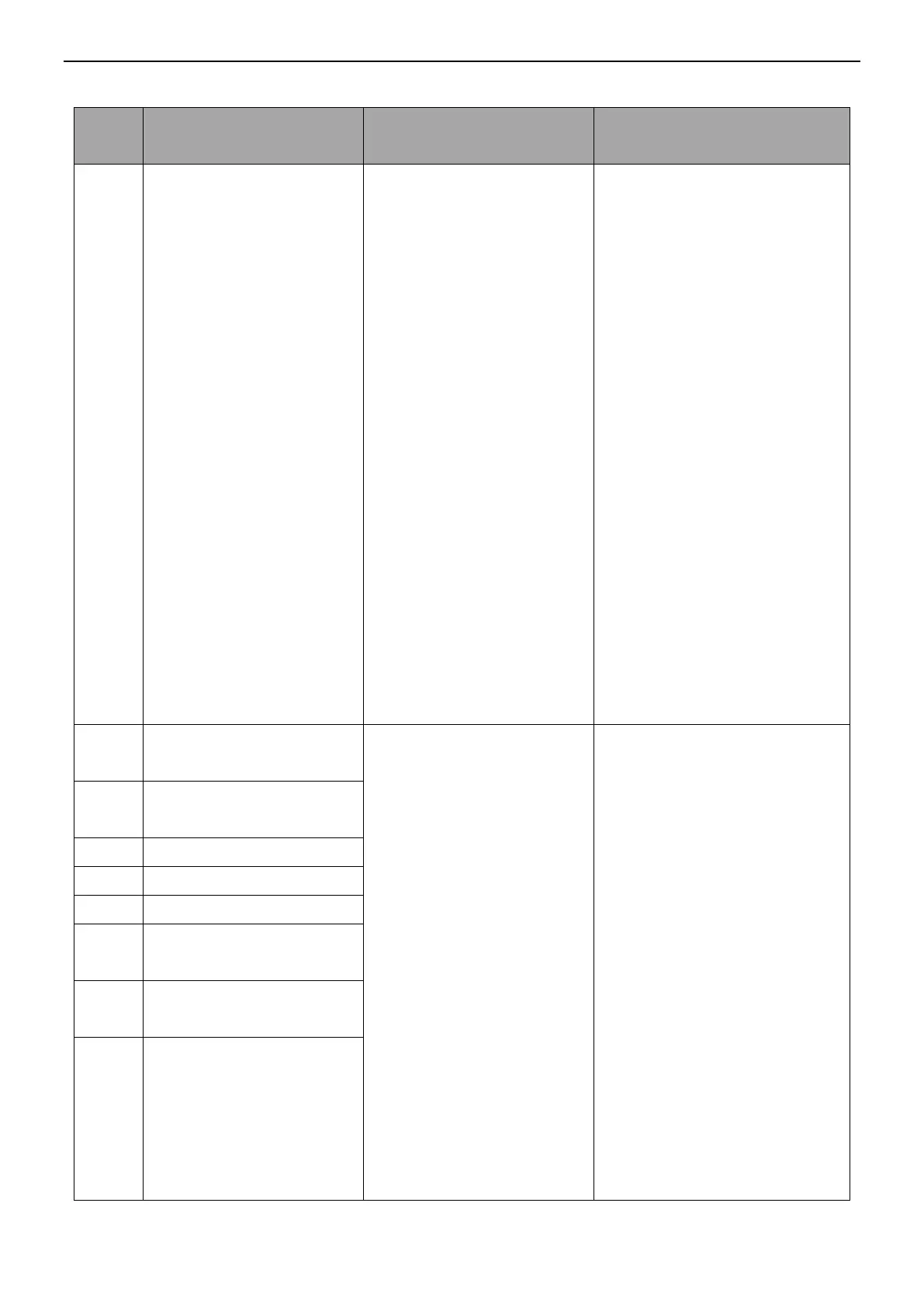INVT SV-DA200 AC Servo Drive PROFINET Technical Guide V2.63
33
4.2 DA200 servo drive faults and solutions
The drive actual output
current exceeds the specified
value.
1. Drive fault (such as drive
circuit or IGBT fault).
2. Motor cables U, V, and W
are short connected, or motor
cables are grounded or
contacted improperly.
3. The motor breaks down.
4. The motor cables U, V, and
W are connected in reverse
phases.
5. Improper parameter
settings cause systematic
divergence.
6. The ACC/DEC time in the
start or stop process is too
short.
7. Transient load is too heavy.
1. Remove the motor cables and
then enable the drive. If the fault
persists, replace the drive.
2. Ensure the motor cables and
wiring are in good conditions.
3. Reduce the settings of P0.10
and P0.11 to reduce the
maximum output torque.
4. Adjust loop parameters to
make the system stable, and
reduce the setting of P0.12.
5. Increase the ACC/DEC time.
6. Replace the drive with a new
one with greater power.
7. Replace the motor.
Encoder fault–Encoder
disconnection
1. The encoder is not
connected.
2. The encoder plug contact
is loose.
3. One of encoder signal
cables U, V, W, A, B, and Z is
disconnected.
4. Encoder phases A and B
are reverse.
5. Noise causes
communication interruption or
data exceptions.
6. The encoder
communicates properly but
with data exceptions.
7. The FPGA that
communicates with the
1. Connect the encoder
according to the correct wiring
method. Ensure the encoder
plug contact is proper. Replace
the encoder cable if the cable is
broken.
2. Ensure the encoder power
voltage is proper.
3. Eliminate the conditions that
disturb encoder cables. Route
encoder cables and motor cables
separately.
Encoder fault–Encoder
feedback deviation too large
Encoder fault– Parity error
Encoder fault–Frame error
Encoder fault–Short frame
error
Encoder fault–Encoder
timeout
Encoder fault–Multi-turn
absolute value loss

